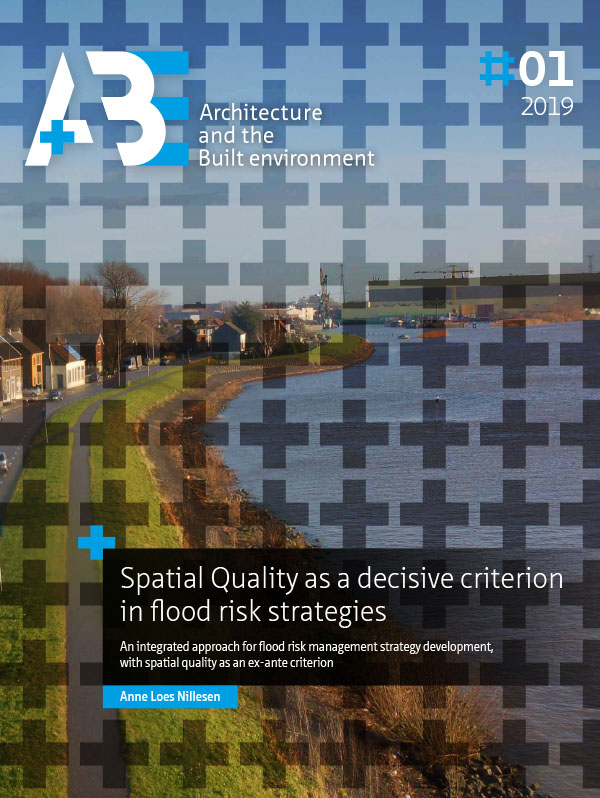Improving the Allocation of Flood risk management interventions From a Spatial Quality Perspective
DOI:
https://doi.org/10.7480/abe.2019.1.3742Abstract
In this publication, the developed integrated method for including spatial quality as an ex-ante criterion in flood risk management strategy development is presented in detail and tested. Based on the results of the earlier research-by-design exercise, as described in the third publication, it is concluded that the key to making spatial quality an ex-ante criterion is to make sure sufficient interchangeable flood risk management interventions, with varying locations, are available, since having multiple effective measures from a flood risk perspective makes selection based on other criteria, such as spatial quality, possible.
In this paper, the ways in which a range of interchangeable measures can be included by considering flood risk management interventions at different scale levels (varying from system scale to local scale interventions) and at different flood risk layers (including both flood risk reduction and consequence reduction measures) is described.
As a base reference situation, the impact on spatial quality of the ‘business as usual’ flood risk management strategy for this region is assessed. Subsequently, the ways that the flood risk management interventions can be shifted away from the locations in which they have a negative effect on spatial quality, by considering alternatives with a better (preferably neutral or positive) impact on spatial quality is tested. This is done by systematically deploying interventions at different scale levels and safety layers, while assessing their impact on spatial quality. Based on this assessment, the combinations of measures that result in an optimal impact on spatial quality, can be selected for the regional flood risk management strategy.
This case study research demonstrates that the developed method, compared to the business as usual reference strategy, allows for spatial quality to become an ex-ante criterion, resulting in the formulation of a flood risk management strategy with an improved impact on spatial quality. The approach includes the following steps:
- An inventory of the current and potential flood risk protection strategies
- An inventory of the spatial characteristics, ambition, and potentials of the region
- A qualitative assessment of the existing situation and (if available) of a reference flood risk management strategy
Systematic research-by-design on how flood risk management interventions at different scales can shift the local flood risk management interventions (and a qualitative assessment of this shift)
Systematic research-by-design on how interventions in different flood risk intervention layers can shift the flood risk intervention (and a qualitative assessment of this shift)

